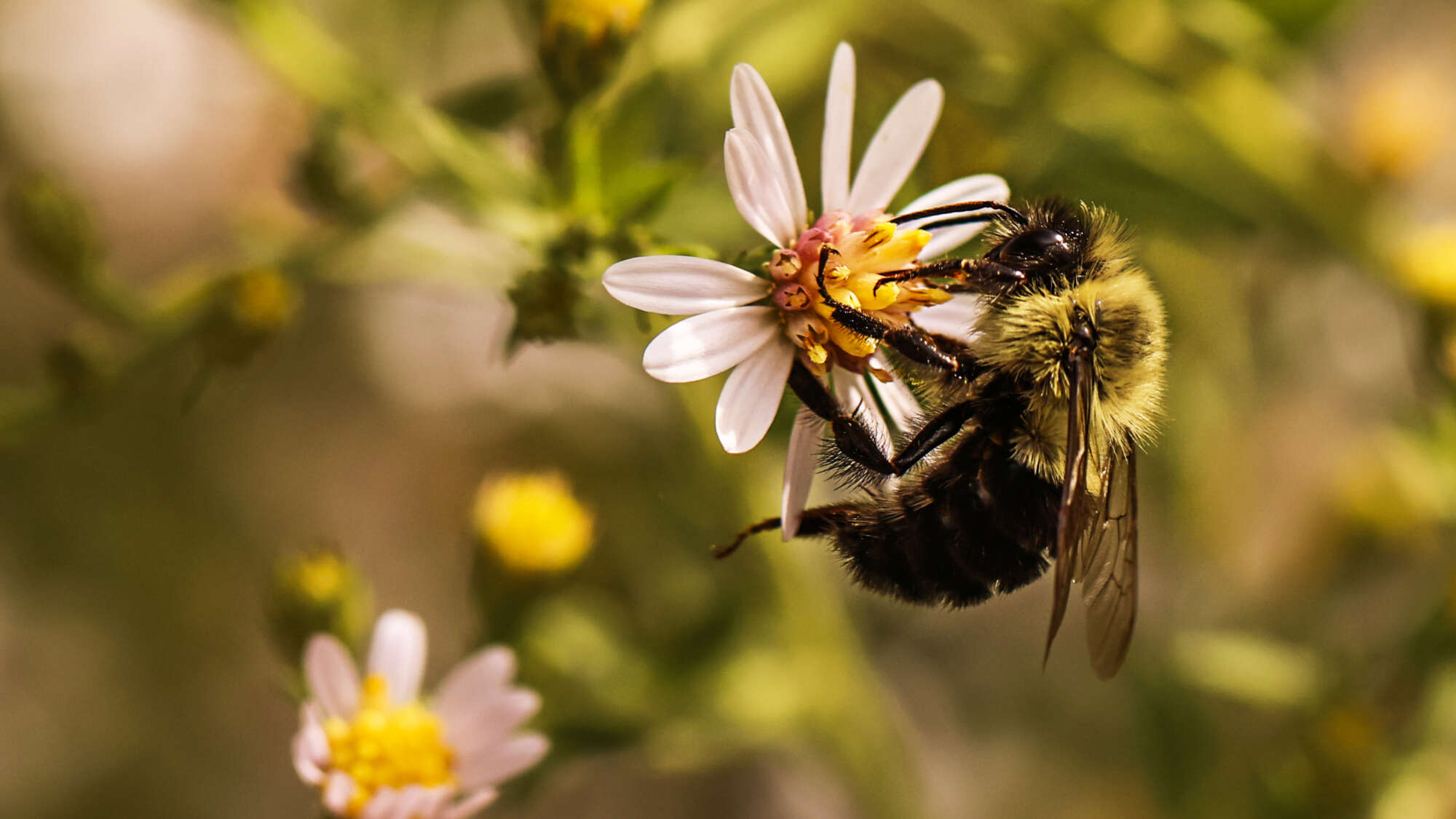K-State assistant professor Brian Spiesman has created a revolutionary resource for bee identification and conservation through artificial intelligence model tracking and image rendering.
When you think of your favorite things, — your family, hobbies, favorite movies — your endorphins go into overdrive.
Now imagine something else: bugs — with their exoskeletons, antennae, and more legs than necessary. How do you feel? Your endorphins didn’t rise, but your anxiety probably did. So how can we turn our uncomfortable emotions for these creatures into a desire to learn about them? K-State assistant professor Brian Spiesman used his passion for environmental function and insect relations to create an app for backyard naturalists to study bees.
The bee identification app
Spiesman’s Beemachine app allows users to snap photos of bees and upload them to a database to get an accurate reading of which species they are. But bee ID isn’t as simple as it sounds.
“Globally, there are about 20,000 different species of bees, and in the United States and North America, there are about 4,000 species,” Spiesman said.
There are only two species that are federally listed as endangered in the U.S. — the rusty-patched bumblebee and Franklin’s bumblebee. Spiesman explains that this misconception came from the many “Save the Bees” initiatives of environmental groups.
“The public tends to primarily think about honeybees when we think of bees as a species,” Spiesman said. “However, honeybees are not endangered. Instead, native bees are in competition with honeybees and are the ones in trouble.”
To get an accurate reading, photos of the bees need to be close-up or cropped shots. That way, more pixels of the bee can be uploaded so that the A.I. model locates the bee in the image automatically.
“There’s no way a non-expert can tell the difference between that many species,” Spiesman said. “I wanted something quick and easy to be able to identify bees. Anyone could put it on a smartphone and go into their garden to see what kind of bees they have. I hope this app will draw attention to the humble bees people don’t notice. Now with a tool to identify them, it will be a good benefit for conservation.”
Looking beyond the bees
The app is available on Android and iOS. Also, Spiesman has a website dedicated to the same concept of the app, Beemachine.ai.
In the future, Spiesman hopes to expand the app to cover more pollinators, including butterflies, beetles and flies. In the process of the app’s development, there will be an option for experts to confirm and others to discuss the prediction of the A.I. model in a communication function.
“We are just getting started,” says Spiesman.
He hopes this app will spread like pollen, and its impact on conservation and overall knowledge of our tiny friends will be un-bee-lievable!
Photo Credit: Tammy Karin of TEKimages.
Want to read more great stories like this one? Use the “I am interested in these topics” form to tell us what you’d like to hear about.
